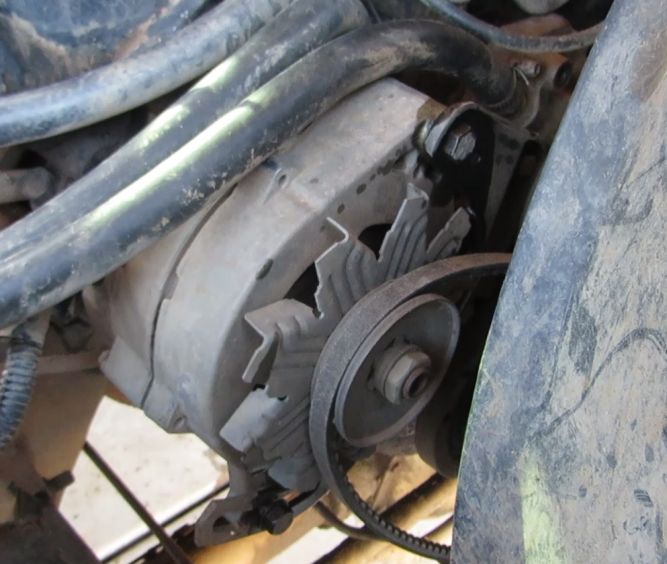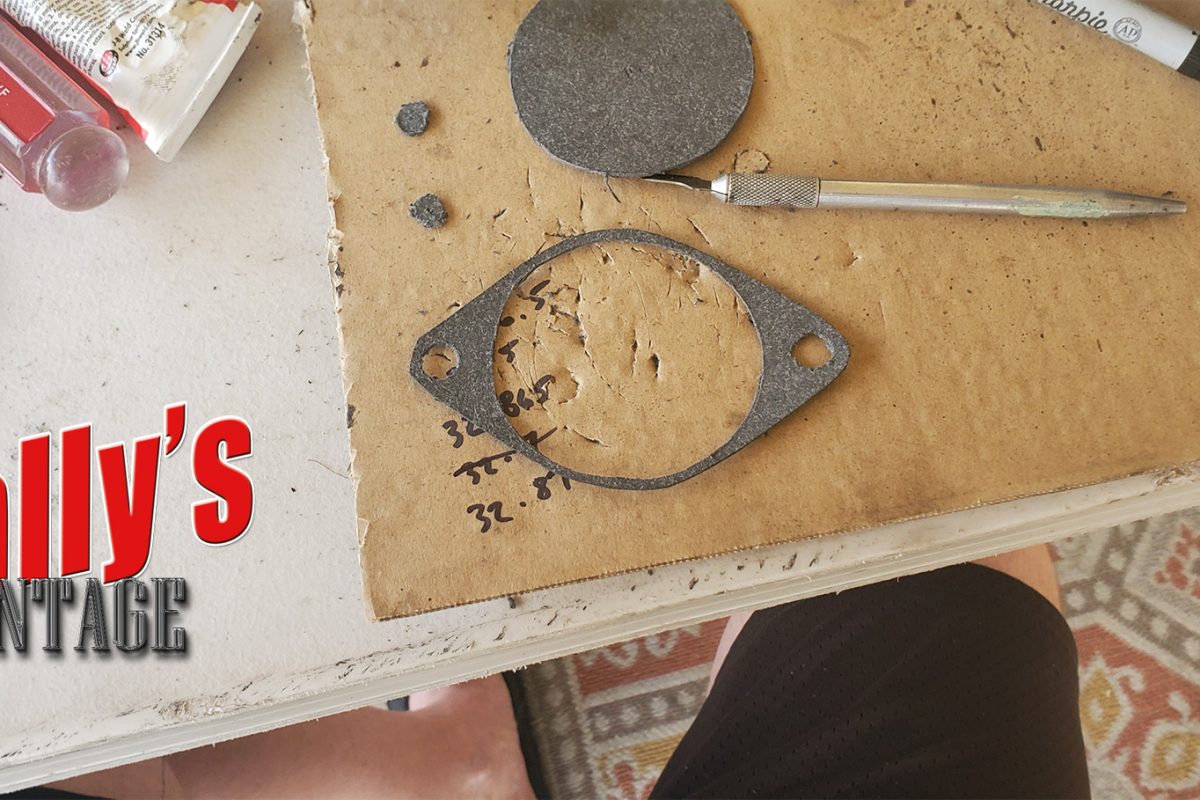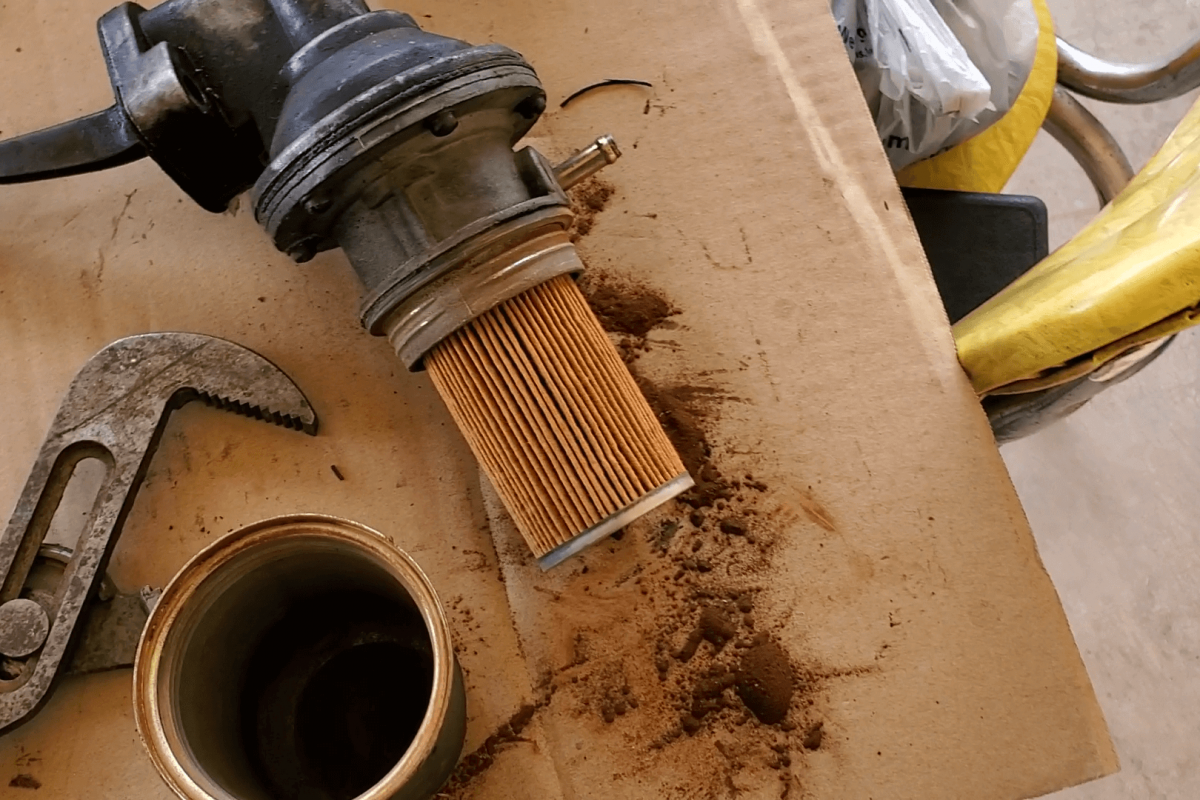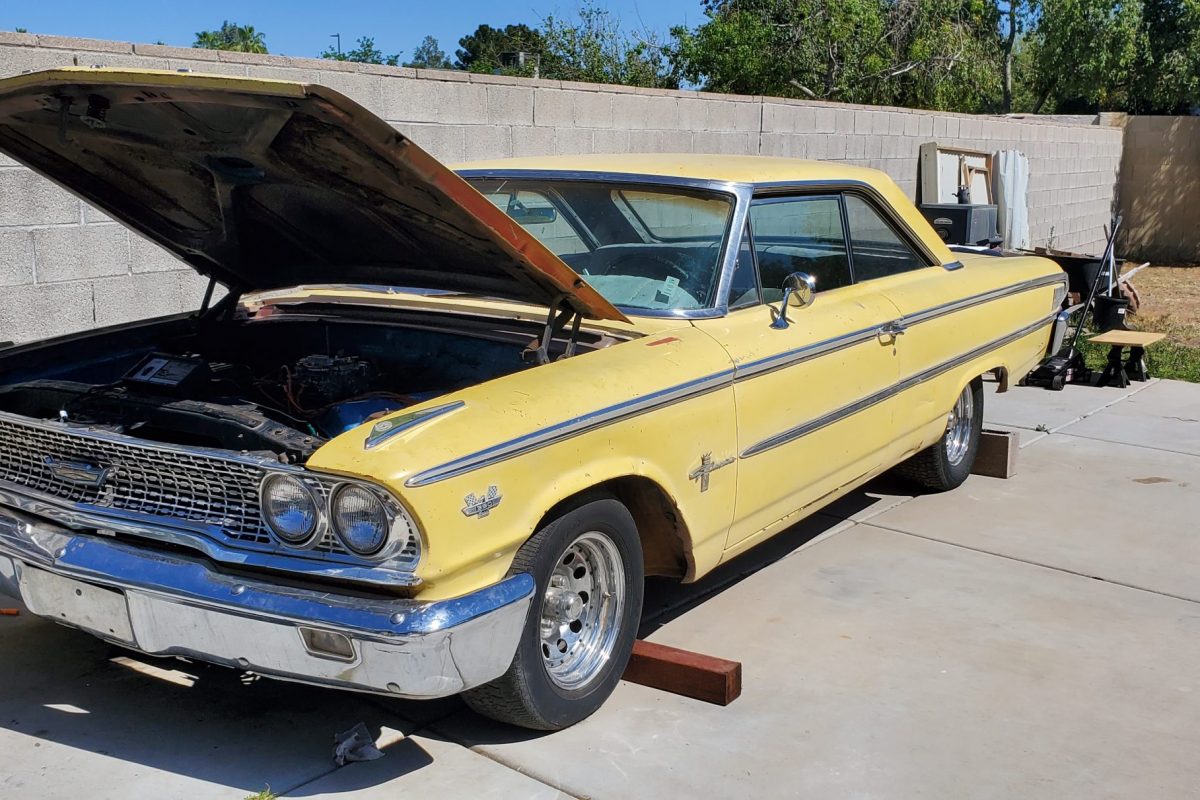
It’s time to swap out the alternator in the 1978 Ford Bronco. The headlights began flickering and fading in and out, and then the truck suddenly died while I was driving it. I had the local parts store test the alternator just to make sure, and it indeed had a bad diode. So, we ordered a new one and it’s time to put it in.
We’ll walk you through the quick alternator removal, install, and diagnostic testing afterward. It’ll be helpful if you have a multimeter for the diagnostics to ensure you’ve solved your problem. Have fun with this one – it should be quick and easy!
1.) Remove the battery
2.) Loosen the alternator adjusting bolt (bottom)
3.) Loosen the alternator through bolt (top)
4.) Remove the wire plug
5.) Remove the terminal bolt and attached wire
Note: You might also have a ground connection that needs removing on your alternator, but this Bronco does not have a ground wire connected to the ground terminal bolt (below the positive marked with red plastic bushing). It uses an external regulator attached to the fender wall in the engine compartment.
Check out the alternator removal video for more details.
Just reverse the steps for your installation and make sure your belt is sufficiently tightened. Push down at the middle-most section of the alternator belt. There should be less than 1/2 inch of give. Simply pull upward from the bottom of the alternator, while you tighten the adjusting bolt. It doesn’t take a whole lot of force, but if you need to create more leverage, just don’t over do it and bend the alternator housing. See the below video for installation details.
Basic Charging System Diagnostics:
Use your multimeter and set it to the Voltage setting with the range up to 20 volts. Take the positive and negative probes and touch them to the respective battery terminals.
1.) Prior to starting the engine – you should get a reading of at least 12 volts. Less than 12 isn’t enough – and probably won’t get you started.
2.) After starting the engine – you should get a reading anywhere from 13-15 volts.
3.) After starting the engine with accessories on – turn on your headlights, and A/C if available. You should get a reading in the 13-15 volt range.
If you see drops in voltage during any of these stages, it will help you narrow down any additional problems. Potential causes could be a headlight switch, bad fuse link, or other trouble spot in your electrical system.




One comment
Evelyn
October 11, 2018 at 2:19 am
What kind of alternator is good? I have a 150 amp one wire powermaster in my 78 bronco but something isn’t right. It squeals when i press the gas after i start the truck and it doesn’t seem to always charge the battery. 650 cca from Walmart. I had a yellow top optima battery but it was too much load for it.